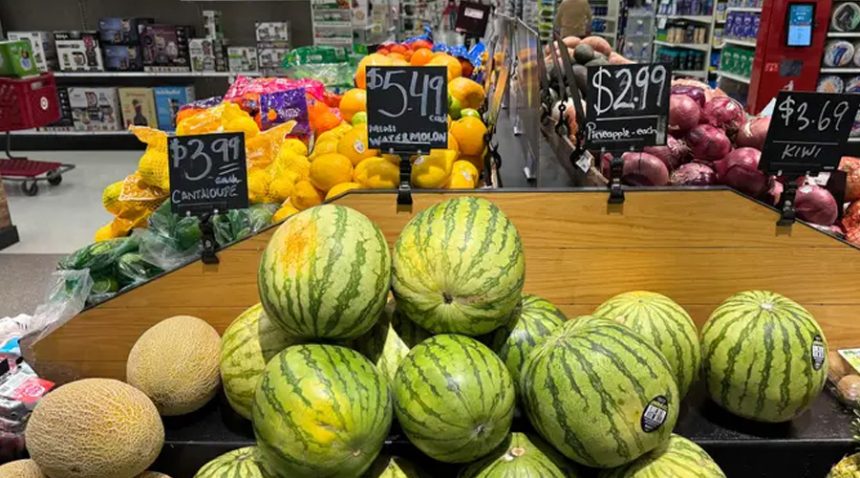Explore how new tariffs are driving up prices on automobiles, groceries, electronics, and clothing
The recent decision by the U.S. government to impose sweeping tariffs has sparked concern across industries and households alike. These tariffs, which apply broadly to imported goods, have already begun to influence consumer prices. With critical categories such as automobiles, groceries, electronics, and clothing affected, households must prepare for a shift in daily expenses. A detailed breakdown shows how these tariffs directly increase costs and reshape purchasing decisions.
Tariffs Overview and Scope
On April 2, 2025, the U.S. administration rolled out a 10% tariff on all imports. In addition to the blanket tariff, the government introduced targeted duties ranging from 10% to more than 50% on imports from specific nations. These measures aim to boost domestic manufacturing, correct trade deficits, and protect national economic interests.
While the government justifies the tariffs as necessary for national competitiveness, economists project widespread price increases and potential inflationary pressure. Consumers will likely feel the consequences first, especially in sectors that rely heavily on imports.
Automobile Prices Surge Under New Tariffs
The auto sector stands among the most affected industries. The government introduced a 25% tariff on imported vehicles and auto parts, disrupting the supply chain and raising production costs.
New Car Costs Increase Sharply
Car manufacturers rely on imported components for engines, transmissions, and electronics. As a result, prices for new vehicles have climbed by $5,000 to $15,000, depending on the model. Luxury and electric vehicles, which depend more on imported tech and specialized parts, now sit well beyond reach for many middle-income families.
Used Car Market Follows Upward Trend
Buyers unable to afford new vehicles have turned to the used car market. As demand rises, prices for pre-owned vehicles also climb. Dealers report shrinking inventories and higher bids at wholesale auctions, making used cars more expensive and harder to find.
Auto Financing and Insurance Costs Rise
The increase in car prices has pushed up auto loan balances. Lenders now require higher monthly payments and longer repayment terms. Insurance premiums have also risen, driven by elevated replacement costs and expensive imported parts. Vehicle ownership now demands significantly more financial planning than before the tariff implementation.
Grocery Bills Reflect the Tariff Impact
Grocery prices have begun to reflect the tariffs, especially for imported food items. With a large portion of fruits, vegetables, seafood, and processed goods entering the country through global trade routes, tariffs have added layers of cost from farm to shelf.
Fresh Produce Becomes More Expensive
Supermarkets now charge higher prices for everyday produce such as tomatoes, avocados, lettuce, and berries. Growers in Mexico and Canada supply much of the fresh produce consumed in the United States. The tariffs on agricultural imports from these nations have caused immediate price spikes.
Meat and Seafood Affected
Imported seafood—especially shrimp, salmon, and tuna—now carries steeper prices. Restaurants and grocery stores face pressure to raise menu prices and shelf labels. Meat products, particularly specialty cuts and frozen imports, have also grown more expensive due to rising shipping and tariff costs.
Beverages and Specialty Foods Hit Hard
Wines from Europe, cheeses from France and Italy, and specialty chocolates now cost more. Importers and distributors have passed on the additional expenses to retailers, who reflect them in higher price tags. Consumers with a taste for global flavors now spend more for the same basket of goods.
Annual Grocery Costs Rise
Households face an estimated annual increase of $3,800 in grocery and essentials spending. This spike results from cumulative price hikes across dozens of product categories. Low- and middle-income families suffer the most, as they spend a larger portion of their income on food and basic supplies.
Electronics and Household Goods Climb in Price
Modern electronics depend heavily on imported components and assembly. Smartphones, tablets, laptops, televisions, and appliances reflect higher input costs due to the tariffs.
Smartphones and Computers Show Price Gains
Manufacturers of smartphones and laptops have raised retail prices. The rise stems from higher costs on imported chips, batteries, and screens. New product launches now arrive with significantly higher price tags, reducing accessibility for average buyers.
Home Appliances Reflect Supply Chain Disruption
Refrigerators, washing machines, and microwaves now cost more. Many companies source motors, steel, and electronic controls from abroad. Tariffs on these imports raise total production costs, prompting manufacturers to adjust their pricing models.
Clothing and Footwear Prices Soar
Retailers in the fashion industry rely heavily on imports from Asia and Latin America. The latest tariffs have disrupted pricing for seasonal apparel, basic clothing, and footwear.
Apparel Costs Rise Across the Board
Shirts, pants, jackets, and athletic wear now carry elevated prices in both brick-and-mortar and online stores. Retailers, facing thinner margins, have increased prices to preserve profitability. Fast fashion brands, which previously thrived on low-cost imports, now struggle to maintain low price points.
Footwear Retailers Pass on Cost to Buyers
Shoes, especially branded sneakers and formal footwear, have also recorded higher prices. Import duties on rubber soles, leather uppers, and synthetic materials add to the production costs. Major brands have adjusted their pricing and product mix to absorb the shock, but buyers now see fewer discounts and less aggressive promotions.
Energy Prices and Utility Costs Respond
The energy sector also feels the ripple effects of the tariffs, particularly through the import of oil and natural gas products. Countries such as Canada, key suppliers of crude oil and refined fuels, now face increased trade costs.
Gasoline Prices Tick Upward
Gas stations in multiple states have adjusted prices upward due to elevated import tariffs on crude oil. Refineries report higher acquisition costs, and transportation companies have passed these expenses down to consumers. Higher fuel prices affect delivery services, logistics, and personal transportation expenses.
Electricity Bills May Rise
Utilities that rely on imported fuel for power generation face rising operational costs. These companies may increase electricity tariffs in regions dependent on foreign energy sources. This change adds another expense category influenced by the new tariff regime.
Strategies for Managing the Cost Burden
Consumers now shift spending behavior in response to price increases. Several strategies have emerged to mitigate the financial impact of tariffs.
Purchasing Essentials Before Price Increases
Consumers have moved quickly to purchase big-ticket items such as cars and electronics before further increases take effect. Retailers report higher sales in anticipation of the next wave of price hikes.
Switching to Domestic Alternatives
Buyers now explore domestic brands and local products that escape the import tariff net. Farmers’ markets, local manufacturers, and regional retailers have seen increased foot traffic and demand.
Cutting Non-Essential Spending
Many households have reduced spending on luxury items, entertainment, and dining out. The rise in essentials forces budget revisions and tighter financial discipline.
Seeking Discount Channels and Loyalty Rewards
Consumers have adopted a more strategic approach to shopping, using cashback offers, coupons, and loyalty programs to manage expenses.
The new tariff regime has produced widespread and tangible effects on prices across essential sectors. Automobiles, groceries, electronics, apparel, and fuel now cost significantly more than before. Households must bear the financial consequences of these policies through adjusted spending, strategic choices, and revised budgets. While the administration defends the tariffs as necessary for national strength, the economic burden shifts directly to the public. Continued monitoring of inflation trends, wage growth, and global trade dynamics will determine the long-term implications of this protectionist shift.





